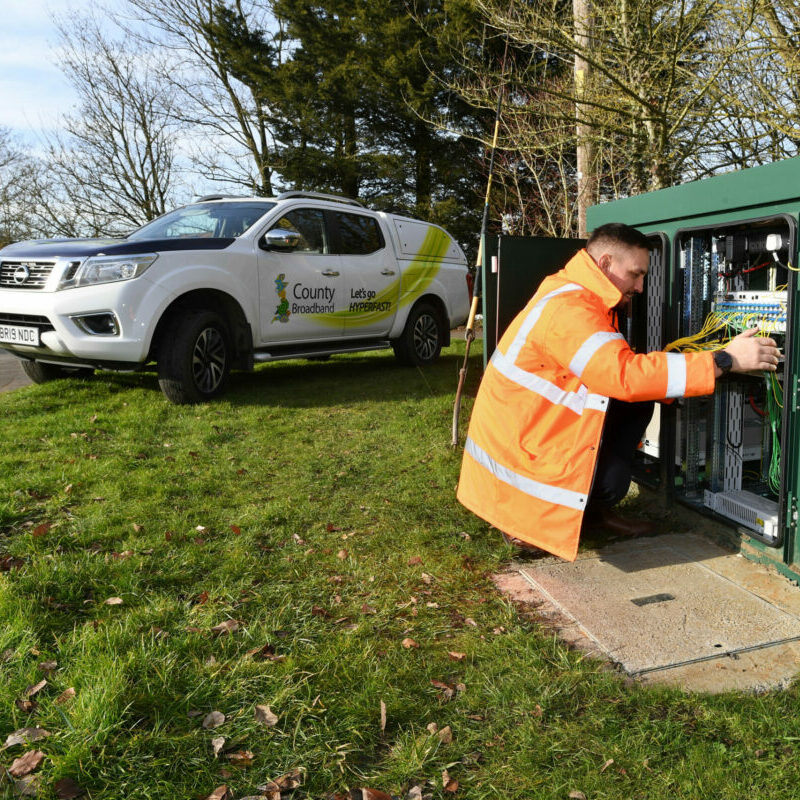A new report reveals rural communities continue to face broadband inequality as just 30% of homes and businesses have access to gigabit speeds compared to 70% in urban areas.
East Anglian based County Broadband has responded to the findings warning the disparity in access to fast speeds will hold back the East of England’s economic recovery. The provider has committed to accelerate its rollout of full-fibre broadband with an ambition to reach half a million premises by 2027 following a combined £147m investment from Aviva Investors.
The analysis from Point Topic also found that whilst 5 million homes in the UK have a choice of three or more ultrafast fibre providers, 10 million don’t have any option at all, leading to a social divide in people’s ability to work, communicate and play.
The findings come as the government commits to delivering nationwide gigabit speeds by 2030 as part of its levelling up agenda. This will largely be driven by full-fibre broadband, known as Fibre-To-The-Premises (FTTP), which will replace the existing Superfast copper-based networks, Fibre-To-The-Cabinet (FTTC), which can’t be upgraded.
button.green { background-color: rgb(187, 218, 0); border: 3px solid rgb(187, 218, 0); color: rgb(255, 255, 255); margin-left: auto; margin-right: auto; margin-top:40px; margin-bottom:40px; display: block; align-content: center; } button.green:hover { background-color: rgb(3, 10, 53); border: 3px solid rgb(3, 10, 53); } button a:hover { color: white; }James Salmon, director of sales and new territories at County Broadband, commented: “When our roads become congested and commuters get stuck in bottlenecks we invest in new infrastructure and reap the benefits – we must do the same for our broadband. Whilst good progress has been made, this new report reveals there is still a long way to go and we must do more to address the emerging digital divide.
“The East of England has faced a challenging few years with the pandemic but we’ve seen first-hand the economic benefits full-fibre can bring in helping the region bounce back. Faster connectivity can boost productivity, incentivise investment, attract tourism and provide new ways to deliver health and education services. Not to mention its role in helping families stay in touch and supporting our growing demand for streaming and gaming services.
“However, in the past whilst other countries invested in full-fibre we kept our existing copper-based networks going on life support. As a result, we’re now languishing on the international league table for broadband speeds behind our European neighbours, including Germany and France. This is making it harder for us to compete in the digital economy.
“Consumer habits are also changing and the demand for data is putting huge pressure on existing networks. A few years ago, a 50Mbps connection may have been enough but the move to more remote working and increased reliance on online platforms has moved the goal posts. Even for those just about managing with their speeds today the direction of travel is clear. Delivering full-fibre broadband to replace the outdated copper networks is the only way to solve this problem but these big infrastructure projects can take up to 18 months which is we why can’t afford to wait any longer.
“A widescale rollout can only be achieved through a combination of public and private investment. The government is relying on companies altnets such as County Broadband and we’re focused on delivering full-fibre broadband to rural villages across the East of England to ensure these communities aren’t left behind.”

James Salmon, director of sales and new territories at County Broadband
Residents and businesses can check if they are covered in County Broadband’s rollout by entering their postcode at www.countybroadband.co.uk.





